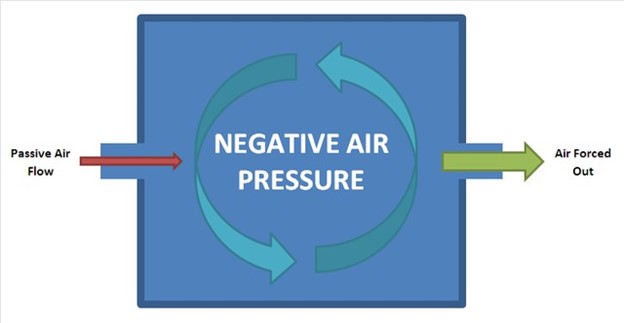A nurse is preparing to admit a 6-year-old with varicella to the pediatric unit.
Which of the following actions should the nurse take?
Administer aspirin to the child for fever
Use droplet precautions when caring for the child.
Assign the child to a negative air pressure room.
Assess the child for Koplik spots
The Correct Answer is C

This is because varicella, or chickenpox, is a highly contagious disease caused by the varicellazoster virus (VZV), which can spread through the air or by direct contact with the fluid from the blisters. A negative air pressure room prevents the air from the room from circulating to other areas of the hospital, reducing the risk of transmission to other patients and staff.
Choice A is wrong because aspirin should not be given to children with chickenpox, as it can cause a serious condition called Reye’s syndrome, which affects the brain and liver. Instead, acetaminophen can be used to reduce fever.
Choice B is wrong because droplet precautions are not enough to prevent the spread of chickenpox. Droplet precautions involve wearing a mask and gloves when in close contact with the patient, but they do not prevent the virus from traveling through the air. Airborne precautions, which include a negative air pressure room and wearing a respirator, are needed for chickenpox.
Choice D is wrong because Koplik spots are not a sign of chickenpox, but of measles, another viral infection that causes a rash. Chickenpox causes an itchy rash with small, fluid-filled blisters that crust over.
Nursing Test Bank
Naxlex Comprehensive Predictor Exams
Related Questions
Correct Answer is D
Explanation
A. BP 150/92 mm Hg:
- This blood pressure reading is elevated and not a therapeutic effect of magnesium sulfate. In the context of preeclampsia, the goal is usually to lower blood pressure to prevent complications.
B. Pulse rate 100/min:
- The pulse rate of 100/min is not a specific therapeutic effect of magnesium sulfate. However, magnesium sulfate may cause a decrease in heart rate, so monitoring for bradycardia would be important.
C. Flushed face:
- A flushed face is not a specific therapeutic effect of magnesium sulfate. Facial flushing may be associated with other factors, but it is not a primary consideration when monitoring the effectiveness of magnesium sulfate in the context of preeclampsia.
D. Negative clonus:
- Negative clonus is the correct therapeutic effect to monitor. Clonus refers to a series of involuntary, rhythmic, and repetitive muscle contractions and relaxations. In the context of magnesium sulfate administration for preeclampsia, negative clonus (the absence of abnormal reflexes) is a sign that the magnesium levels are within the therapeutic range, helping to prevent seizures.
Correct Answer is A
Explanation

These are signs of severe dehydration in an infant, which can be life-threatening and should be reported to the provider immediately. The infant may need intravenous fluids and electrolytes to restore hydration and prevent complications.
Choice B is wrong because a temperature of 38° C (100.4° F) and pulse rate of 124/min are not abnormal for an infant and do not indicate severe dehydration. These are common findings in an infant who has gastroenteritis, which is an inflammation of the stomach and intestines caused by a virus, bacteria, or parasite.
Choice C is wrong because decreased appetite and irritability are also common findings in an infant who has gastroenteritis, but they do not indicate severe dehydration. The nurse should encourage oral rehydration with fluids such as breast milk, formula, or oral electrolyte solution.
Choice D is wrong because pale skin and a 24-hr fluid deficit of 30 mL are not signs of severe dehydration in an infant.
A fluid deficit of 30 mL is less than 1 oz and is not significant for an infant who weighs about 10 kg (22 lbs). A fluid deficit of more than 10% of body weight would indicate severe dehydration.
Normal ranges for vital signs in infants are as follows:
- Temperature: 36.5° C to 37.5° C (97.7° F to 99.5° F)
- Pulse rate: 100 to 160/min
- Respiratory rate: 30 to 60/min
- Blood pressure: 65/41 to 100/50 mm Hg
Normal ranges for fluid intake and output in infants are as follows:
- Fluid intake: 100 to 150 mL/kg/day
- Fluid output: 1 to 2 mL/kg/hr
Whether you are a student looking to ace your exams or a practicing nurse seeking to enhance your expertise , our nursing education contents will empower you with the confidence and competence to make a difference in the lives of patients and become a respected leader in the healthcare field.
Visit Naxlex, invest in your future and unlock endless possibilities with our unparalleled nursing education contents today
Report Wrong Answer on the Current Question
Do you disagree with the answer? If yes, what is your expected answer? Explain.
Kindly be descriptive with the issue you are facing.
